
The Australian plainhead is a breed of domestic canary that was created for show purposes. The variety was developed through selective breeding and remains the only breed of canary created in Australia.

The Australian plainhead is a breed of domestic canary that was created for show purposes. The variety was developed through selective breeding and remains the only breed of canary created in Australia.
The Australian plainhead has its roots in the old style Norwich canaries that originated in Norwich, England and became a popular show variety in Australia. [1] In the 1930s, differences between the older show standard used by the breeders of Victoria, Australia and the more modern standards of the UK, created a bitter divide amongst Australian breeders of the Norwich canary. [2] Decades later, after the modern Norwich had largely displaced the old-style birds from the Victorian show scene, a club was started in 1953 to preserve the old breed which was renamed the Australian plainhead. [2] By 1991, the number of Australian plainhead canaries in Australia had dropped to around 460 birds. [3] Whilst the Australian plainhead remains a rare breed, it is now far more widespread with birds being bred throughout Australia and in the US. [3]

The Australian plainhead is a "type canary", which is mainly judged for its shape (referred to as type). Despite this, the breed is also noted for its colour and feather quality. [4] Australian plainhead may be green, blue (grey), yellow, white, cinnamon, fawn and variegated. Show birds may be "colour-fed" carotenoids during molting which gives new feathers an orange hue, but this is optional. [5] The birds are shown in a box style show cage with a white interior. [5]
Australian plainheads typically breed well with basic care and attention. [2] While many other large canary breeds require foster pairs to rear their offspring, Australian plainheads are good feeders and usually rear their own young. [2]
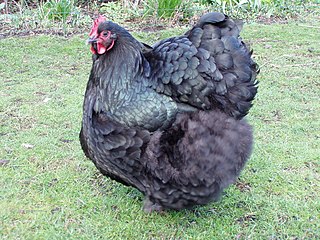
The Orpington is a British breed of chicken. It was bred in the late nineteenth century by William Cook of Orpington, then in Kent in south-east England. It was intended to be a dual-purpose breed, to be reared both for eggs and for meat, but soon became exclusively a show bird.

The Dorking is a British breed of domestic chicken. It is named for the town of Dorking, in Surrey in southern England.
Fancy pigeon refers to any breed of domestic pigeon, which is a domesticated form of the wild rock dove. They are bred by pigeon fanciers for various traits relating to size, shape, color, and behavior, and often exhibited at pigeon shows, fairs and other livestock exhibits.

The Serama, also called the Malaysian Serama, is a bantam breed of chicken originating in Malaysia within the last 50 years.

Indian Runners are a breed of Anas platyrhynchos domesticus, the domestic duck. They stand erect like penguins and, rather than waddling, they run. The females usually lay about 300 to 350 eggs a year or more, depending whether they are from exhibition or utility strains. They were found on the Indonesian islands of Lombok, Java and Bali where they were 'walked' to market and sold as egg-layers or for meat. These ducks do not fly and only rarely form nests and incubate their own eggs. They run or walk, often dropping their eggs wherever they happen to be. Duck-breeders need to house their birds overnight or be vigilant in picking up the eggs to prevent them from being taken by other animals.

The Japanese bantam or Chabo is a breed of chicken originating in Japan. It is a true bantam breed, meaning that there are no large fowl counterparts. It has a large upright tail that often reaches over the bird's head. The wings angle down, and to the back, along the sides.

The domestic canary, often simply known as the canary, is a domesticated form of the wild canary, a small songbird in the finch family originating from the Macaronesian Islands.

The Ancona is a breed of chicken which originated in the Marche region of Italy, but which was bred to its present type mainly in the United Kingdom in the nineteenth century. It is named after the city of Ancona, capital of the Marche. It is popular in Britain and the United States, but uncommon in Italy; an initiative to re-establish it in its native area and preserve its biodiversity was launched in 2000. There are also Ancona bantams.
The Croad Langshan is an old, heavy, soft-feathered chicken breed which probably originated in China.
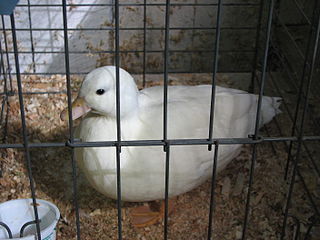
The call duck is a breed of domesticated duck raised primarily for decoration or as pets. Call ducks look similar to some other duck breeds, but are smaller in size. Call ducks were initially used in hunting, where their own calls and quacks - which are characteristically high in pitch as a result of their small size, and especially loud - would attract wild ducks towards the hunter's guns. This practice has almost entirely been replaced with artificial duck calls, with call ducks now being kept primarily as pets.

The Magpie is a British breed of domestic duck. It has distinctive black and white markings reminiscent of the European magpie, and is a good layer of large eggs.

The Sebright is a British breed of bantam chicken. It is a true bantam – a miniature bird with no corresponding large version – and is one of the oldest recorded British bantam breeds. It is named after Sir John Saunders Sebright, who created it as an ornamental breed by selective breeding in the early nineteenth century.

The Campine is a breed of domestic chicken originating in the northern part of Belgium. It is named for the Campine region of north-eastern Belgium and south-eastern Netherlands. It was known there as the Kempisch Hoen.
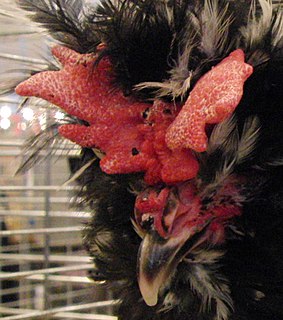
The Houdan or Poule de Houdan is an old French breed of domestic chicken, belonging to the group of crested chicken. It is named for its area of origin, the commune of Houdan, in the département of Yvelines to the west of Paris. The Houdan has an unusual butterfly-shaped comb, and is one of few breeds to have five toes rather than the usual four.

The Silver Appleyard is a British breed of domestic duck. It was bred in the first half of the twentieth century by Reginald Appleyard, with the aim of creating a dual-purpose breed that would provide both a good quantity of meat and plenty of eggs.

The red factor canary is a popular variety of canary. It is named after its colourful plumage, and is a 'color canary', bred for the novelty of its color rather than for its song. It is kept by those who want a pet, as well as those who enjoy showing.
The Asil or Aseel is a breed of chicken originating from Indian subcontinent
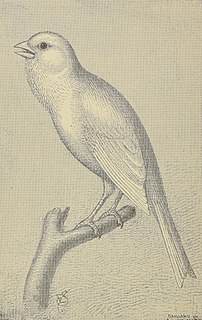
Harz Roller is the name of a breed of domestic canary bred in the Upper Harz mountains of Germany. The birds were bred in the Upper Harz between Lautenthal and Sankt Andreasberg in the middle of the 19th century and achieved European-wide fame. Since 2001 there has been a Harz Roller Museum in Sankt Andreasberg.
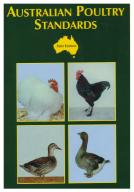
The Australian Poultry Standards is the official breed standard for poultry fancy in Australia. It is the standard of perfection from which all poultry in Australia is supposed to be judged when exhibited at poultry shows. It is published by Victorian Poultry Fanciers Association, the peak body for poultry in Victoria and agreed to by all other state peak bodies.
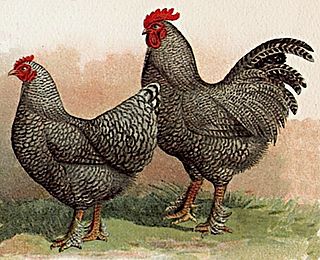
The Malines, Dutch: 'Mechelse Koekoek', is a Belgian breed of large domestic chicken. It originates from the area of Mechelen, in the province of Antwerp in Flanders, for which it is named. It was created in the nineteenth century by cross-breeding local cuckoo-patterned farm chickens with various different types of imported Oriental chicken. With the Jersey Giant, it is among the heaviest of all chicken breeds. It is valued for the quality of its meat, which is pale in colour and fine-textured.